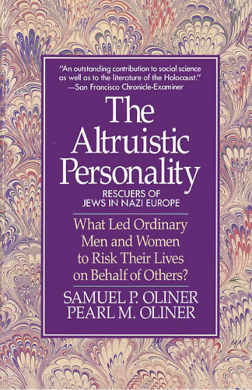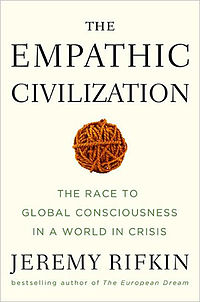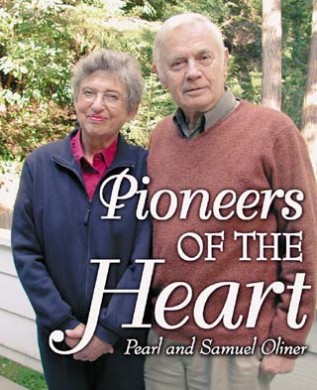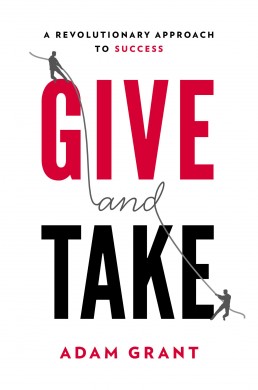This article provides an introduction to Altruism. It explores how people express kindness when faced by challenges.
Samuel and Pearl Oliner have devoted much of their lives to studying humanity at its best. Their books include The Altruistic Personality and Do Unto Others: Extraordinary acts of ordinary people, how altruism inspires true acts of courage.
They went on to found The Altruistic Personality and Prosocial Behavior Institute at Humboldt University. The video above introduces the course on Altruism.
The Altruistic Personality chronicles the activities of people who protected Jews during the Holocaust. Somewhere up to 500,000 non-Jews risked their own lives to rescue the victims of Nazi persecution.
These were ordinary people, say Pearl and Samuel. They were farmers, teachers, entrepreneurs, factory workers, rich and poor, parents and single people, Protestants and Catholic.
Different people helped the Jews in different ways. Some offered them shelter, some helped them escape from prison and some smuggled them out of the country.
The Rescuers committed themselves to helping Jews, knowing that capture would mean death for their families. Why?
Many rescuers said simply, “It was the right thing to do.” Individuals also said things like:
I was always filled with love for everyone, for every creature, for things. I am fused into every object. For me everything is alive.
I sensed I had in front of me human beings that were hunted down like wild animals. This aroused a feeling of brotherhood and a desire to help.
We had to help these people in order to save them, not because they were Jews, but because they were persecuted human beings who needed help.
Samuel illustrates the moral of the book by describing his own experiences. As a 12-year-old Jewish boy in Poland, he fled the Nazis after his parents were captured. Knocking on the door of a family he hardly knew, he was taken in by the mother, Balwina.
Protecting him from the Nazis, she spelled out her instructions. He must change his name to Jusek, go to church every Sunday, learn the Catholic Catechism, get a job and make sure nobody saw him if he undressed.
Balwina protected him for a while, but then the situation became too dangerous. He trekked across the country with other refugees and finally found safety.
The Concept of Extensivity
The Oliners found that people who demonstrated altruism had a strong moral compass. Many grew up in loving families that had a strong base of ethics, empathy and what the Oliners called extensivity.
Such people feel a sense of responsibility to both their loved ones and to wider groups of people. This moral compass guides their actions, especially when challenged to live their values.
The Rescuers saw caring as extending far beyond themselves and saw it as natural for them to help other human beings. The Oliners go on to define this as:
The tendency to assume commitments and responsibilities toward diverse groups of people. Extensivity includes two elements:
The propensity to attach oneself to others in committed interpersonal relationships.
The propensity toward inclusiveness with respect to the diversity of individuals and groups to whom one will assume obligations.
Jeremy Rifkin has extended this approach even further. He has described how the future of our civilisation may depend on extending our empathy to the entire human family and the biosphere.
This RSA Animation below brings to life many of Jeremy’s ideas. It starts slowly, focusing on experiments with monkeys, but then builds to take in all life.
Taking us through the human journey, he explains how we are soft-wired for empathy. This enables us to co-operate, share our strengths and flourish.
He shows how empathy is based on our ability to acknowledge the certainty of death. This in turn encourages us to celebrate the riches of life and help each other.
Jeremy believes we can extend our empathy to the entire human race, to other species and to the biosphere.
Human beings will thrive if we broaden our sense of identity. This involves recognising that our actions have consequences on the entire system.
As mentioned earlier, Samuel and Pearl Oliner went on to found The Altruistic Personality and Prosocial Behavior Institute. They write:
For the purpose of our study, we prefer a definition that relies on objective, measurable criteria. We characterize a behavior as altruistic when:
It is directed towards helping another
It involves a high risk or sacrifice to the actor
It is accomplished by no external reward
It is voluntary
Heroic altruism involves greater risk to the helper, whereas conventional altruism is not life-threatening to the helper.
Samuel wrote another book on this theme called Do Unto Others. In it he focuses on heroic, moral and philanthropic individuals who have translated these values into action.
In addition to well-known names, he describes the activities of hidden heroines and heroes in many countries. Here is the Introduction from the page on Amazon.
A passing motorist stops to help the passengers of a car that has crashed into an embankment. A hospice volunteer begins her shift in hospital ward caring for people with AIDS.
A Vietnam chopper pilot stops the brutal execution of innocent civilians at Mylai by American soldiers. A firefighter responds to a routine call.
All of these people are considered heroes, but what motivates such brave and altruistic acts, whether by trained professionals or just ordinary people?
In Do Unto Others, Holocaust survivor and sociologist Samuel Oliner explores what gives an individual a sense of social responsibility, what leads to the development of care and compassion, and what it means to put the welfare of others ahead of one’s own.
Weaving together moving personal testimony and years of observation, Oliner makes sense of the factors that elicit altruistic behavior – exceptional acts by ordinary people in ordinary times.
http://www.amazon.co.uk/Do-Unto-Others-Extraordinary-Ordinary/dp/0813342872
Samuel discovered that many such people had learned optimism and concern for others from their parents. These qualities had also been reinforced by teachers, peer groups and communities they encountered.
Later in life they were sometimes confronted by challenging circumstances. They then chose to translate this moral code into action.
The Oliners have made a great contribution to showing what people do when performing at their best. You can read more about them in this article by William Severini Kowinski.
http://www.northcoastjournal.com/042403/cover0424.html
Many other people continue to focus on Altruism. You can learn about The Centre For Effective Altruism, for example, via the following link.
http://www.centreforeffectivealtruism.org/
“These things sound admirable,” somebody may say.
“But what about in the tough world of business? Surely it is a matter of everyone for themselves?”
Certainly at first sight this may appear to be the case. Even in business, however, it seems that kindness and giving can benefit people.
Adam Grant’s book Give and Take shows how being a giver, rather than a taker, can benefit everybody. Below are excerpts from the website that provides an overview of his book. I have emphasised some of the key points in bold lettering.
Give and Take changes our fundamental ideas about how to succeed – at work and in life.
For generations, we have focused on the individual drivers of success: passion, hard work, talent, and luck.
But in today’s dramatically reconfigured world, success is increasingly dependent on how we interact with others.
Give and Take illuminates what effective networking, collaboration, influence, negotiation, and leadership skills have in common.
Using his own ground breaking research as the youngest tenured professor at Wharton, Grant examines the surprising forces that shape why some people rise to the top of the success ladder while others sink to the bottom.
In professional interactions, it turns out that most people operate as either takers, matchers, or givers.
Whereas takers strive to get as much as possible from others and matchers aim to trade evenly, givers are the rare breed of people who contribute to others without expecting anything in return.
These styles have a dramatic impact on success. Although some givers get exploited and burn out, the rest achieve extraordinary results across a wide range of industries.
This visionary approach to success has the power to transform not just individuals and groups, but entire organizations and communities.
There are many approaches to demonstrating altruism, kindness and generosity. Here is another RSA video in which Adam expands on the approach of being a giver.
In it he outlines how being more giving can transform not just individuals and groups, but entire organisations and communities. The talk was chaired by Mark Williamson, director of Action for Happiness.











Leave a Reply